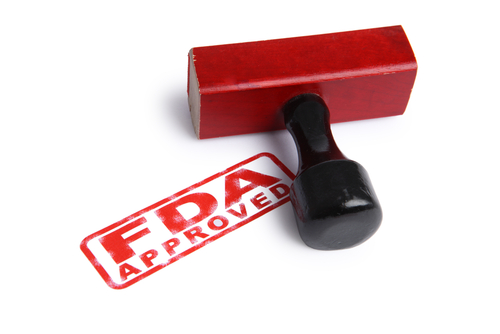FDA Approves XLH Treatment with Crysvita for Patients 6 Months and Older

The U.S. Food and Drug Administration (FDA) approved a label update for Crysvita (burosumab) to cover treatment of X-linked hypophosphatemia (XLH) for patients 6 months and older.
This update includes data showing improvement in stiffness, continued healing of fractures, and maintenance of efficacy with longer-term use of Crysvita in adult patients.
XLH is characterized by high levels of the hormone fibroblast growth factor 23 (FGF23), resulting in low blood levels of phosphate due to its abnormal processing in the kidneys, and soft, weak bones (or rickets).
In children, rickets is associated with bone deformity, delayed growth, and reduced height. Adults with XLH have a greater risk of fractures.
Crysvita, developed and marketed by Ultragenyx Pharmaceutical and Kyowa Kirin, is an antibody that binds to and blocks the activity of FGF23, thereby increasing phosphate reabsorption from the kidney and boosting vitamin D production. It was first approved in the U.S. in April 2018 for the treatment of XLH patients 1 year and older.
The decision to update the label was based on clinical data indicating Crysvita’s superiority to conventional therapy (oral phosphate and active vitamin D) in pediatric patients with XLH.
A 64-week, randomized Phase 3 study (NCT02915705) compared the therapies in 61 children from 1 to 12 years old. Crysvita was given via under-the-skin injection (subcutaneous) at a 0.8 mg/kg starting dose, administered every two weeks up to week 140 (which covered an extension period).
Results showed Crysvita’s superiority across all key primary endpoints, or goals, including significantly lessened severity of rickets and lower limb deformity, as well as improved growth. Safety findings at the end of the study were similar to those observed at 40 weeks and in other pediatric XLH studies, the companies said.
The label update for adults was based on a Phase 3 study (NCT02526160) that evaluated 134 adults with XLH through week 48.
Results indicated that, throughout the study, blood phosphorus levels were maintained at normal levels with no evidence of loss of efficacy in the treatment.
Also, the findings demonstrated continued healing of fractures and pseudofractures (small linear bone cracks) at week 48, as well as an improvement in stiffness at week 24.
The therapy’s safety profile was consistent with what was previously known, with no new adverse events in the extended period.
“We are pleased that the updated Crysvita label includes compelling results from a controlled clinical trial demonstrating that Crysvita is significantly more effective than conventional therapy in normalizing phosphorus levels, reducing rickets and lower leg deformity, and improving growth in children with XLH,” said Camille L. Bedrosian, MD, chief medical officer of Ultragenyx, in a news release.
“Furthermore, longer-term data from a study in adults are included showing important sustained Crysvita efficacy in this life-long disease,” she added.
A Kyowa Kirin-sponsored Phase 3b trial (NCT03920072) is currently recruiting adults with XLH who participated in previous clinical trials of Crysvita to monitor its long-term safety and efficacy. Details of contacts and locations can be found here.






